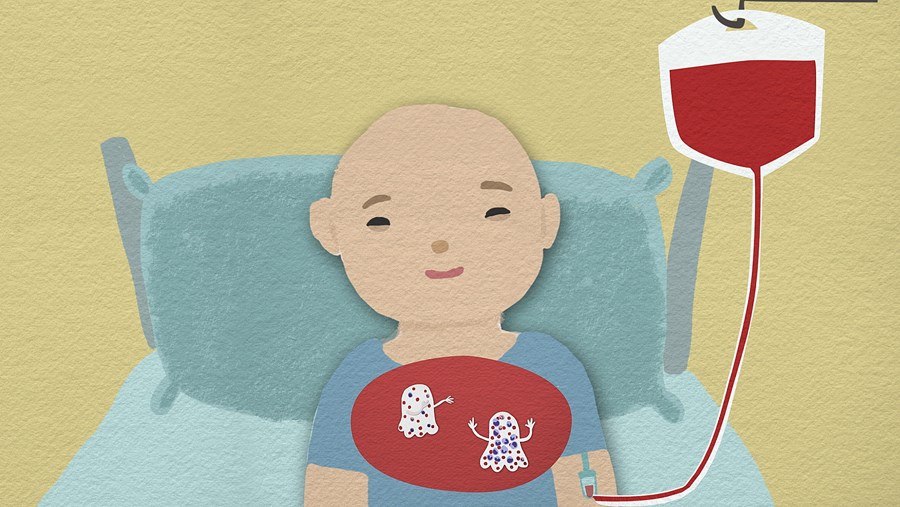Vancouver filmmaker Jeff Chiba Stearns and Reel People share several key characteristics.
We both love film. We're both parents. We both identify as mixed race.
Chiba Stearns is Japanese and Caucasian; Reel People is Ukrainian and South Asian.
We’re members of the fastest growing demographic in Canada. According to Chiba Stearns, within several generations more than 50 per cent of Vancouver’s population will be able to describe themselves as being from a mixed race background (the meaning and reality of which Chiba Stearns delved into in his first documentary feature, 2010’s One Big Hapa Family).
Should we (knocking all the wood) as mixed race Canadians ever get so sick that we are in urgent need of a bone marrow transplant, we face a potentially frustrating and harrowing journey to find a match.
It’s a struggle that Chiba Stearns explores in Mixed Match, his feature-length documentary that has its world premiere this week at the 35th Vancouver International Film Festival.
In Mixed Match – which employs animation and live action footage – the science for bone marrow-matching is broken down by pioneering scientist Dr. Paul Terasaki.
Terasaki (who passed away earlier this year) developed the tissue-typing test used to match Human Leukocyte Antigen (HLA) in donors and recipients, and explains that every race has a slightly different frequency of tissue type; if you’re in need of a transplant, your best chance of finding a match is in your own racial group.
For mixed race people, it’s harder to find a donor. The required HLA combinations make it challenging – especially when the bone marrow registry is overwhelmingly Causasian.
Mixed Match introduces audiences to patients and families living this nightmare throughout North America, as well as to organizations on both sides of the border attempting to add more potential donors to the bone marrow and stem cell registries.
At times, Mixed Match is heartbreaking. We meet families desperate for a match, and get to know individuals who have been waiting years for the match that would save their lives.
We even delve into the troubling and damaging definitions surrounding the construct of race, as well as racism: Chiba Stearns includes a screenshot of racist comments that appeared on the YouTube page for Mixed Match’s trailer, from white supremacists who insisted that the HLA issue is scientific proof that races shouldn’t mix in the first place.
Despite the sadness and the racism, the film is overwhelmingly hopeful. We witness incredible courage, positivity, and strength in people who have every reason to feel anything but – something that Chiba Stearns says he observed on countless occasions over the six years he worked on this project.
“The majority of the people we followed, they were the most positive people in the room,” says Chiba Stearns in a recent phone interview. “They’d always be the most inspirational. It’s almost like the disease has brought something out in them that made them see the world differently in the way that they wanted to help others, and they wanted to help spread the message.”
In one emotional scene, a 5-year-old girl meets the woman who saved her life via bone marrow donation, reminding viewers that the possibility for cures exists. People just need the opportunity to find their mixed matches, says Chiba Stearns; the only way to do that is to expand the donor registry.
Hence Mixed Match’s call to action.
Chiba Stearns has launched Mixed Match Project (MixedMatchProject.com), an online initiative to share donor and recipient stories and increase the bone marrow donor registry.
He’s hosting a bone marrow registry drive at the Oct. 6 screening. “That’s part of the mandate is that we’ll always try and include bone marrow drives at every screening,” he says, noting upcoming screenings and drives in Hawaii, San Diego, Philadelphia, and Toronto. “People can watch the film and take the call to action.”
The stakes are even higher for Chiba Stearns than when he first started work on Mixed Match in 2010. He’s a dad now; his daughter was born at BC Women’s Hospital earlier this year (an event that is featured in the film). Cord blood from her birth was donated to the national cord blood bank.
BC Women’s is one of only five hospitals in Canada that is set up to collect cord blood for the national cord blood bank. BC Women’s was chosen for this initiative because of the unique ethnic diversity of babies being born here that could help increase the non-white stem cell pool, according to Chiba Stearns.
Reel People is adding herself to the bone marrow registry. You can, too: visit MixedMatchProject.com to find out how you can help – or sign up at the Oct. 6 screening.
Mixed Match screens Oct. 4 and 6 as part of VIFF’s BC Spotlight. Tickets at https://www.viff.org/Online/default.asp?BOparam::WScontent::loadArticle::permalink=f21782-mixed-match


